You may well be dressed as a scary Zombie or whoever is flavor of the month around the end of October when after carving a mini masterpiece in orange, someone will wonder aloud “Can cats eat Pumpkin? ” The winter squash is native to North America with pumpkin-related seeds being found in Mexico dating from a time long before the pyramids were even thought of. These days pumpkins are not only boiled, steamed, roasted, mashed and pureed but thrown (chunked) or displayed in their own festivals. They have increased in popularity around the world and Halloween has surely played its part in it becoming more widely grown and consumed.
Can Cats Eat Pumpkin?
While too much of anything is always a bad thing, there are pros and cons to giving your cat pumpkin. This is partly due to the very different parts that make up the fruit. A sensible rule of thumb is to not feed any part of it that you would not happily eat yourself.
Cats should not eat the outside of the pumpkin, the stem, leaves, or the seeds. While seeds are ok for humans to eat, our canine counterparts could choke on the seeds. Seeds can also contain chemical compounds that do not agree with the digestive system of a cat. The pulp of the pumpkin is relatively safe to give a cat, but your kitty may not be able to fully digest the pulp without issue. Some cats may tolerate pumpkin without issue, but others may have stomach upset. Determining the tolerance levels of your cat is important to do before offering your cat this treat. Also research whether your cat’s breed is afflicted by any allergies, and perhaps make mention to your vet and get their advice on the topic.
The Cons
Digestive problems would be a concern with the prickly and rough stem. The stem is rough, difficult to chew, and difficult to swallow. Passing the stem may be even more of a challenge and cause an intestinal blockage if indeed the stem can be swallowed. If your cat has swallowed the stem of a pumpkin, you should rush him/her to vet and have the stem removed.
Likewise, the tough skin of the pumpkin will not have an easy time going through the digestive tract. The skin of a pumpkin is quite rough and difficult to break down. A cat has a small body and a small digestive system, thereby making tough food difficult to pass without danger. Leaves of a pumpkin are poisonous to a cat, and should be avoided. Cats should not eat the outer portion of a pumpkin at all, just as humans generally avoid this area.
Raw pumpkin and pulp (the slimy goo in the center) should also be avoided for the same reason that we do not reach for our spoons while carving. Raw pulp is not tasty, is slimy, stringy, and difficult to chew and swallow by cats. The stringy parts of the pumpkin can also be a choking hazard to a cat with a small throat. All human food given to cats should be cooked to be sure to avoid bacteria and any food borne illness. Cooking pumpkin also allows the food to soften and be easier to digest.
Cats are not suited to spicy, sugary or foods that have additives so avoid canned or pumpkin pie filling. Pumpkin pie and the pie filling itself is never a good idea for a cat because of the high sugar content. Pie filling is also not a pure, whole food like real pumpkin is. Cats can occasionally enjoy human foods, as long as the food is a whole food and not filler.
A Jack-O-Lantern that has been sitting on the front porch for a few days will inevitably be starting to decompose and the accompanying bacteria and molds could cause more serious issues to a cat if eaten-more problems than just a little extra time in the litter tray. Rotten pumpkin left out and eaten by cats can be poisonous and cause choking and even death. Be sure to remove pumpkins that are rotten from your outdoor area if you have outdoor cats in your neighborhood.
The Pros
There is a good reason that pumpkins are grown on every continent around the world (with Antarctica being the only exception). They are a nutritional powerhouse and often make up a large part of higher quality kibble. Pumpkin is a wonderful food full of vitamin and nutrients, and can even be used on skin and hair.
One of the main benefits of feeding your cat pumpkin is its high fiber content. Fiber will help your cats digestive system, boost their immunity and keep your cat feeling full when between meals. The pumpkin and fiber content may also help your cat to lose weight if their weight has become an issue.
With up to five grams per half cup and already saturated with water, there are few better ways to ingest this roughage- in suitable portions.
Fiber can help avoid overeating and thus excessive weight gain by promoting a feeling of fullness- a contented cat makes for a happier companion around the house.
The soluble nature of the fiber found in pumpkin can absorb excess water in the digestive tract, which can also help alleviate and relieve the symptoms of diarrhea.
If on the other hand, your cat is not as “regular” as normal, the high fiber content of pumpkin can help stimulate bowel movements by creating the bulk required to get things moving.
Pumpkin is high in many Vitamins in particular A, C and E.
Vitamin A as in humans promotes good vision and a boost to the immune system. Vitamin C strengthens tendons and ligaments through collagen synthesis and is also a cofactor for enzymatic reaction.
Vitamin E is an enzymatic activity regulator and also a fat-soluble antioxidant.
Iron is helpful with hemoglobin production, oxidation and cellular respiration. Bones and teeth as with us benefit from extra Calcium and Lutein helps maintain healthy eyes, coat and skin.
Conclusion
With all this in mind, it is very important to remember that you should discuss all dietary changes with your veterinarian.
Don’t feed a lot of pumpkin to your cat, certainly no more than a teaspoon a day for an adult cat. You can add pureed pumpkin (canned pumpkin) to your pet’s daily meal. Do not add salt or anything else for that matter and remember to cook the pumpkin as you would for the rest of your family or friends and do allow time for it to cool.
Pumpkin seeds can also be part of a cats diet. Clean and roast the seeds for an hour in a hot oven again with no salt or spices. Feed even more sparingly than the fresh pumpkin, an eighth of a teaspoon is more than enough.
Coming back to the original question, yes you can certainly give some pumpkin to your feline friend. But and it is a big but, moderation is very important. Too much- and it doesn’t take a lot- can be quite detrimental. The GI tract is sensitive and the natural laxative effects of pumpkin can have results that you will enjoy even less than your now rather uncomfortable friend. Start with very small amounts and see how things go.
Ultimately remember to check with your veterinarian, err on the side of caution and keep plenty of clean fresh water available.
References:
http://www.petinsurance.com/healthzone/pet-articles/pet-health/Canned-Pumpkin-for-Dogs-and-Cats.aspx
http://throughadogsear.com/surprising-health-benefits-of-pumpkin-for-dogs-and-cats/
http://www.care2.com/greenliving/top-three-health-benefits-of-pumpkin-for-dogs.html

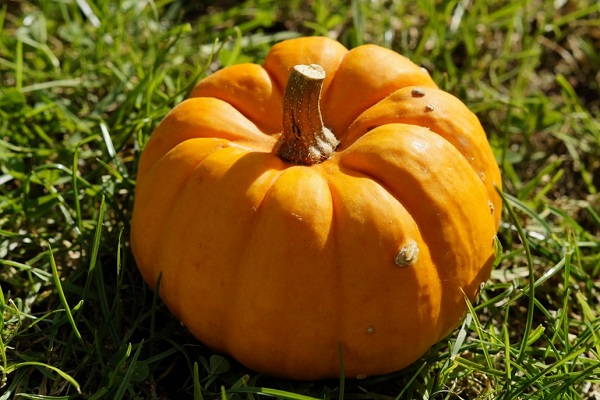
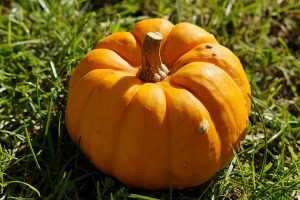
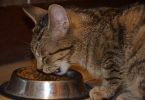

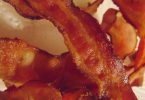
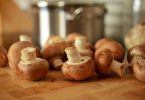

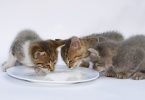
Leave a Comment